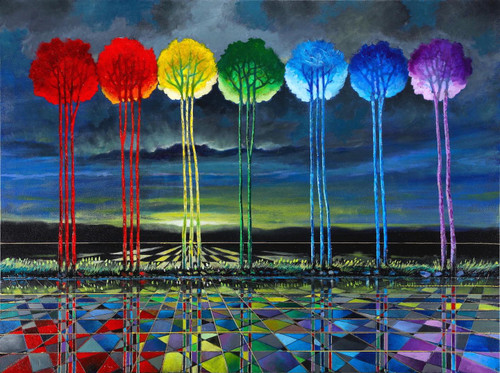Bat Masterson - The Two Worlds of Bat Masterson framed giclee canvas edition.
Framed Size: 13.75" x 11.75"
LIMITED EDITION CANVAS
Limited Edition of: 250
Canvas Size: 9"w x 11"h.
William Bartholomew “Bat” Masterson (1853- or 1856-1921) was a lawman, soldier, gambler and writer, a man belonging solidly in both the Old West and the modern East Coast. At a young age Masterson, like so many others of his time, left home to hunt buffalo on the grassy plains of the West. On June 27, 1874, he took place in what would become the Second Battle of Adobe Walls at Adobe Walls, Texas. The Southern Plains tribes of the area surrounded the three adobe buildings at the center of town and, at dawn, they attacked. Masterson and 28 other settlers barricaded themselves in and fought through windows and cracks in the walls. Miraculously, when the dust settled the next day, the Indians had given up the fight and the settlers had won.
In his later years, Masterson became interested in boxing and athletics and began to write a sports column for the Denver paper "George’s Weekly." When President Roosevelt appointed him U.S. Marshal for the southern district of New York, Masterson took his writing with him and began a column for the "New York Morning Telegraph." He died in his office at the "Telegraph" of a heart attack in 1921, his last column still unfinished in the typewriter.
Don Crowley Bio
Born in Redlands, California, Don Crowley got started in the world of art at such an early age that he couldn’t remember a time when he wasn’t drawing. During his school years in Santa Ana, he read everything he could about art and spent every spare moment developing his skill. Service in the Merchant Marines and the Navy enabled Crowley to enroll in the Art Center School of Design in Los Angeles under the G.I. Bill. Five years later, he moved to New York and began a successful career in commercial illustration. After more than twenty years in the Northeast, Crowley felt restricted by the narrow range of his commercial work and began to work more extensively in fine art. In 1973, he accepted an invitation to exhibit his paintings at a gallery in Arizona. He was so taken by the area that he decided to continue his career there. With his family, Crowley settled in the Southwest, where he began forging a relationship with a group of Native Americans. Although he is recognized and respected for many different kinds of paintings, he is best known for his sensitive and skilled portraits of these Apache and Paiute women and children. Crowley visits the San Carlos Reservation annually to continue chronicling the lives of his subjects. “I hope that my work expresses the beauty and dignity of these very special people,” he says. Through Crowley’s work, his collectors have watched his subjects grow over the years. Occasionally you’ll see a rare Don Crowley image of a cowboy or a cattle drive, but what he is best known for are handsome, clear portraits of Native American women and children, not to mention their colorful Pendleton blankets. In fact, long-time collectors of his work may see the same subject as both a girl and woman, wearing the colorful, geometric-patterned blanket that was handed down from generation to generation. In 1995, he was elected to the Cowboy Artists of America and, in his first year, won the CA Gold Medal for Drawing. The following year he was awarded four awards: a Gold Medal for Oil, Silver Medal for Drawing, the CA Award and the Kieckhefer Best in Show Award. With customary dry humor, Crowley termed this accomplishment very encouraging














